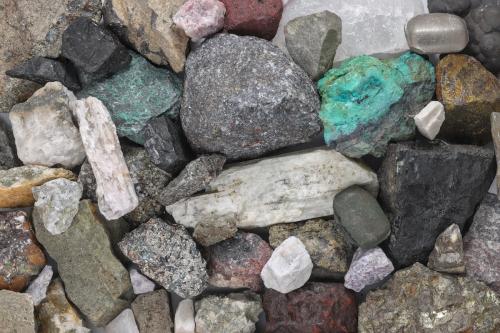Below is a viewpoint from Chapter 5 of the Foresight Africa 2017 report, which explores six overarching themes that provide opportunities for Africa to overcome its obstacles and spur inclusive growth. Read the full chapter on confronting climate change here.
 A research paper, “Warming increases the risk of civil war in Africa,” presented to the U.S. National Academy of Sciences claims that temperature rises in Africa have coincided with significant increases in the likelihood of war.[1] U.N. Secretary-General Ban Ki-moon has described the conflict in Darfur as the world’s first climate change conflict.[2] The assumption is that water scarcity from changed rainfall patterns resulting from climate change contributed to the conflict in Darfur. This reflects findings that the incidence of conflict is likely to be higher in years of lower precipitation. Marshall Burke and his colleagues from U.S. universities published “the first comprehensive examination of the potential impact of global climate change on armed conflict in sub-Saharan Africa” using regression analysis of historical data, and find a relationship between past internal conflict in subSaharan Africa and variations in temperature (but not precipitation) showing “substantial increases in conflict during warmer years.” In numerical terms, a 1 percent increase in temperature leads to a 4.5 percent increase in civil war in the same year and a 0.9 percent increase in the following year. By year 2030, based on averaged data from 18 climate models, this amounts to a 54 percent increase in armed conflict incidence in the region. The researchers argue that conflict will derive from economic uncertainties resulting from temperature-related yield declines in societies heavily dependent on agriculture. Research to date found that economic welfare is the single factor most consistently associated with conflict incidence.
A research paper, “Warming increases the risk of civil war in Africa,” presented to the U.S. National Academy of Sciences claims that temperature rises in Africa have coincided with significant increases in the likelihood of war.[1] U.N. Secretary-General Ban Ki-moon has described the conflict in Darfur as the world’s first climate change conflict.[2] The assumption is that water scarcity from changed rainfall patterns resulting from climate change contributed to the conflict in Darfur. This reflects findings that the incidence of conflict is likely to be higher in years of lower precipitation. Marshall Burke and his colleagues from U.S. universities published “the first comprehensive examination of the potential impact of global climate change on armed conflict in sub-Saharan Africa” using regression analysis of historical data, and find a relationship between past internal conflict in subSaharan Africa and variations in temperature (but not precipitation) showing “substantial increases in conflict during warmer years.” In numerical terms, a 1 percent increase in temperature leads to a 4.5 percent increase in civil war in the same year and a 0.9 percent increase in the following year. By year 2030, based on averaged data from 18 climate models, this amounts to a 54 percent increase in armed conflict incidence in the region. The researchers argue that conflict will derive from economic uncertainties resulting from temperature-related yield declines in societies heavily dependent on agriculture. Research to date found that economic welfare is the single factor most consistently associated with conflict incidence.
But not everyone accepts the causal link between climate change and conflict with much of the doubt resulting from inherent complexities of defining conflict. With many political, social, economic and environmental factors playing either a preventing or a stimulating role, applying quantitative analysis to conflict and predicting the chance of future conflicts is problematic.
It is true that impoverishment and human insecurity may arise as a result of climate change, if preventive measures are not undertaken. But there is missing evidence that global warming directly increases conflict.
It is true that impoverishment and human insecurity may arise as a result of climate change, if preventive measures are not undertaken. But there is missing evidence that global warming directly increases conflict. The temperature has risen in the last three decades, but the number of conflicts has significantly dropped since. A prominent study by scholars from the International Peace Research Institute, Oslo, claims that “the causal chains suggested in the literature have so far rarely been substantiated with reliable evidence.”[3]
In my previous publications I argue that causes of conflict are primarily political and economic, not climatic. Warlords, who foster conflict, may exploit drought, flooding, starvation, agricultural, or natural disasters in their strategies, like they did in Somalia and Darfur. But what will drive their fight is not the rain, the temperature, or the sea level: They will always fight for goals such as power, territory, money, revenge, etc.
I question the idea that scarcity always leads to conflict. Scarcity of water or other resources might, on the opposite, encourage cooperation, as it has done in the Nile or in the Lake Chad Basin.[4] When people face climate dangers and scarcity, they may decide to fight, but similarly they may decide to co-operate. After the 2004 tsunami in Southeast Asia we witnessed more co-operation and peace in Aceh, not more conflicts.
The world has to be prepared to meet the challenge of human migration and dislocation, being those produced by civil wars or climate change.
Climate change will force people to move to less arid or drought-prone areas inhabited by other people, as predicted in the Horn of Africa. People have always moved to better livelihood places, either as a result of human or naturally induced pressures. The world has to be prepared to meet the challenge of human migration and dislocation, being those produced by civil wars or climate change. Operationally there is not much of a difference—humanitarian agencies need to offer to people on the move the same elements of survival and safety—food, shelter, medicines, trauma relief, etc. However, when addressing the root causes of human suffering, one should not confuse armed conflict and climate change. The causes of armed conflict are different from the causes of climate change and need to be addressed differently. But the consequences of the two types of disasters are similar—dislocated people—who need the same rescue.
Bradford Plumer notes that the idea that climate change will lead to widespread conflict and chaos around the world is increasingly employed as a means to convince people about climate change where other rationales have not been successful.[5] Further research is required to fully understand the relationship between climate change and conflict. The evidence will take many years to compile and the cooperation of experts across a range of disciplines is needed to reduce both conflict and climate disasters.
1 Burke, Marshall B., Edward Miguel, Shanker Satyanath, John A. Dykema, and David B. Lobell. 2009. “Warming increases the risk of civil war in Africa.” Proceedings of the National Academy of Sciences 106 (46): 10670-20674.
2 http://www.pnas.org/content/106/49/20670.full.pdf. 2 Ki-moon, Ban. 2007. “A Climate Culprit In Darfur.” Washington Post, June 16. http://www.washingtonpost.com/wp-dyn/content/article/2007/06/15/ AR2007061501857.html.
3 Nordas, Ragnhild, and Nils Petter Gleditsch. 2007. “Climate change and conflict.” Political Geography 26: 627-638. http://n.ereserve.fiu. edu/010034599-1.pdf.
4 Notaras, Mark, and Obijiofor Aginam. 2009. “Sucking Dry an African Giant.” Our World, Brought to you by United Nations University, March 23. http://ourworld.unu.edu/en/sucking-dry-an-african-giant.
5 Plumer, Bradford. 2009. “Global Warring.” New Republic, November 20. https://newrepublic.com/article/71332/global-warring.
The Brookings Institution is committed to quality, independence, and impact.
We are supported by a diverse array of funders. In line with our values and policies, each Brookings publication represents the sole views of its author(s).






Commentary
Foresight Africa viewpoint: Does climate change cause conflict?
January 20, 2017